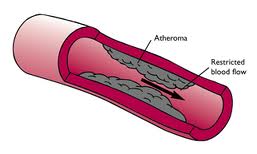Posted By Dr. Mercola on October 15 2012
Statins are the world’s most-prescribed class of medications. A staggering one in four Americans over the age of 45 now take cholesterol-lowering drugs such as Pravachol, Mevacor, Lipitor, Zocor, Crestor, and others. A majority of them are taking these drugs for primary prevention of heart attacks and strokes. However, mounting research suggests this could be a critical mistake.
Most recently, two separate studies have concluded that progression of coronary artery calcification, which is the hallmark of potentially lethal heart disease, is INCREASED with statin drug use.
Statins Increase Prevalence of Coronary Calcification by More than 50 Percent!
A new study in the journal Atherosclerosis shows that statin use is associated with a 52 percent increased prevalence and extent of calcified coronary plaque compared to non-users. None of the participants in the study – 6,673 in all – had any known coronary artery disease at the time of undergoing coronary CT angiography (CCTA) – a non-invasive method that allows you to see coronary atherosclerotic features, including plaque composition.
Arterial plaque is a hallmark of cardiovascular disease and increases your risk of all-cause mortality, so clearly, anything that increases calcification and stiffening of your arteries is wisely avoided. And statins seem to fall into this category.
These disturbing findings come right on the heels of another study published in the journal Diabetes Care, which discovered that type 2 diabetics with advanced atherosclerosis who are frequent statin users have significantly higher amounts of coronary artery calcification compared to less frequent users of the drug.
Furthermore, in a subgroup of participants who initially were not receiving statins, progression of both coronary artery calcification as well as abdominal aortic artery calcification was significantly increased when they began frequent statin use.
The authors concluded that:
“More frequent statin use is associated with accelerated coronary artery calcification in T2DM patients with advanced atherosclerosis.”
